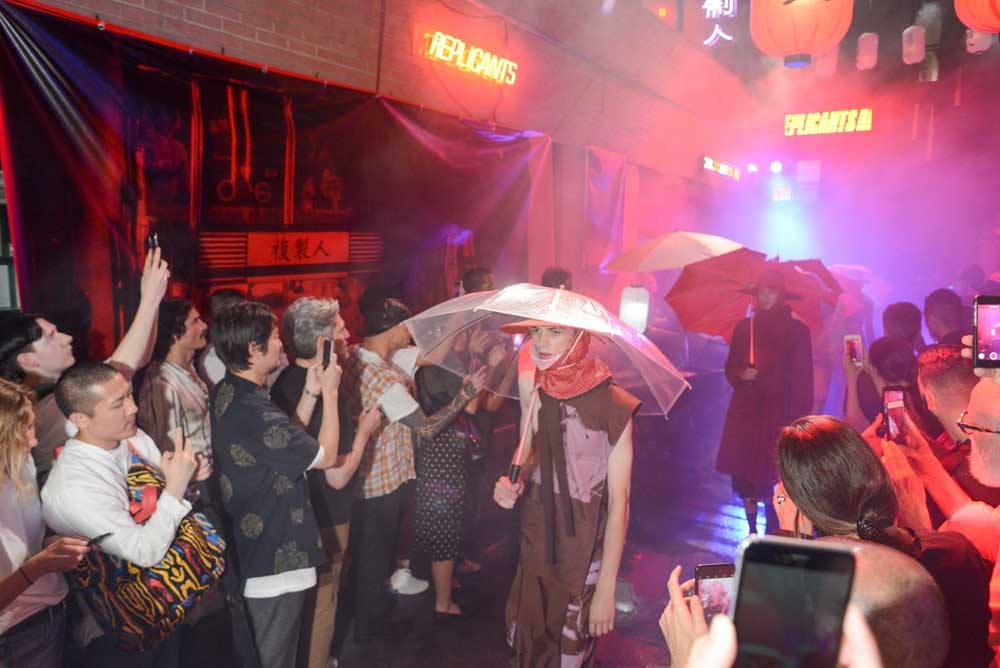‘Blade Runner,’ serving up sexy replicant looks for fall
Published 5:58 am Tuesday, October 17, 2017

- At the Raf Simons show, held underneath the Manhattan Bridge in Chinatown during New York Fashion Week Men’s in July, both the set and the looks paid scrupulous homage to “Blade Runner,” the sci-fi masterpiece which has cast a long shadow over the world of fashion. (Casey Kelbaugh/The New York Times file photo)
“Blade Runner 2049” may be the most well-funded sequel ever made to a movie that both tanked at the box office and got creamed by critics.
“What’s the name of that woman in The New Yorker?” said Ridley Scott, who directed the original and produced the sequel. “Pauline Kael? Oh my God! She slaughtered me. It got personal. I’d never even met her.”
Trending
Filmed for around $28 million and released in mid-1982, “Blade Runner” did not crack the list of top 25 best-earning movies of the year. Its two Oscar nominations came in technical categories: production design and visual effects.
And although Kael praised those things in her review, she said the “pulpy suspense plot” was not engrossing, that the voice-overs were “ludicrous” and that Scott was no good at dialogue.
Today, the film is considered a masterpiece, one of the rare science fiction films that justifies its ontological aspirations.
Film professors put it on their syllabuses. Fashion designers turn to it as frequently as “Breakfast at Tiffany’s.” And music video directors ape it shot for shot.
“There’s never been a better looking post-apocalyptic film,” said Dominic Sena, who directed Janet Jackson’s “Rhythm Nation” video, part of which was shot in downtown Los Angeles in the Bradbury Building, where much of the original “Blade Runner” takes place.
I am the business
Trending
“Blade Runner” presented a dystopian metropolis in which robots are used as slave labor and sport fantastic punk couture outfits. They also have consciousness, so they seek freedom, while a class of officers try to “retire” them. Permanently.
The female lead is Rachael, played by Sean Young. She makes her entrance with her hair curled into what Michael Kaplan, one of the film’s costume designers, described as a modern take on a pompadour.
Her armor-like, shoulder-padded suit, seemingly intended to convey complicated messages about whether she is human, called to mind Thierry Mugler and Grace Jones, who were setting the tone for 1980s extremism in fashion.
Scott still isn’t sure who among them got to that look first. “Style often comes together mysteriously and at once,” he said. “It’s like graduate school, where you do your Ph.D, get your essay in early — and find out that six others are doing the same thing.”
Numerous designers turned to Rachael for inspiration.
Take Alexander McQueen’s fall 1998 couture collection for Givenchy, which Kaplan reviewed on a recent morning in Manhattan’s West Village neighborhood on his iPhone. “Look at that,” he said. “That’s the power of movies.”
“Blade Runner” did well for Kaplan too.
Before he got the job working for Scott, his biggest credit was as a costume designer for “Can’t Stop the Music,” a 1980 film that was loosely about the Village People and starred the future Caitlyn Jenner.
Not a lot of people saw that.
After “Blade Runner,” he became one of the most in-demand costume designers in Hollywood, with credits including many of the most fashion-forward films, notably “Flashdance,” “Fight Club” and “Mr. & Mrs. Smith.”
That detecting look
Rachael’s love interest, Rick Deckard, is a hunter of these replicants. His clothes serve as a counterpoint to what the rest of the film’s characters wear, and take their inspiration from the past: ‘40s and ‘50s noirs.
“His shirts and ties and suits were remarkably discreet,” Scott said. “I didn’t want diagonal slits. We were always talking about Philip Marlowe and ‘The Long Goodbye.’”
They also borrowed from Humphrey Bogart as Marlowe in “The Big Sleep.” Initially, Kaplan (and his co-designer Charles Knode) planned for Ford to wear a Bogart-like top hat. Ford arrived on set having just wrapped “Raiders of the Lost Ark,” and he told them no way was he putting anything on his head again.
About a week after that, Ford called Scott to tell him he’d also taken the liberty of getting himself a crew cut.
“I thought, oh, no,” said Scott, using more colorful phrasing than that. “Crew cuts do not suit everyone well. Then I saw it, and I did not love it.”
Sexbot, isn’t it nice
Daryl Hannah’s frizzy blond hair and pancake makeup were somewhat inspired by a movie called “Breaking Glass,” starring Hazel O’Connor as a punk songstress. Scott, a feminist too impatient for political correctness, added a twist: He wanted to make Hannah look more like a prostitute.
“I just wanted Daryl to represent the male dream of what we would call a pleasure model, because that’s how she was designed and bred,” said Scott, who also directed “Thelma & Louise” and “Alien.” “I know. How chauvinistic. My God. We can’t say that today, but that’s how she was described at the time!”
She epitomized “a sexuality,” he said, “a gritty grungy sexuality.” John Galliano made references to it in his fall 2006 couture collection for Dior.
A coat that won’t tear in rain
The first replicant Deckard retires is a nightclub performer, played by Joanna Cassidy. She attempts escape in a clear plastic raincoat. It was made especially for the film and subsequently became a meme in fashion.
For her fall 2002 collection, Miuccia Prada showed plastic raincoats. “I went, ‘uh huh.’ OK then,” Scott said.
This summer, Raf Simons showed something similar, with a set that looked nearly identical to the downtown Los Angeles of “Blade Runner.” Being imitated, Scott said, is both “irritating and a nice thing.”








